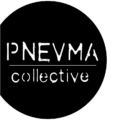Wednesday night at Midnight: Join us for a 30-minute flash reading from across languages and literatures! more info here: https://rasif48.github.io/midnight-readings/ The midnight readings are a series of shared online reading sessions of 30 minutes each, in which we collectiveley share literature in all its forms in a multi-lingual setting (arabic to other languages/other-languages to arabic).
Categorywriting
Journal / Testing-Ground #2
The full issue of TESTING-GOUND is available online and in bookshops in London. excerpt from: Wall, Ed, and Alex Malaescu. “Editorial.” Testing Ground, no. 2 (2019). “What resides on the other side can cause fear, concern, intrigue, delight and fascination. Neighbouring and distant lands are destinations to visit, invade, occupy and separate ourselves from. Many national borders are marked
Report / Weaponised Landscapes: Mapping the Calais 'Jungle'
Haendeler, Jens, Alex Ioannou, and Anushka Athique. “Weaponised Landscapes: Mapping the Calais ‘Jungle.’” Edited by Ed Wall and Alex Malaescu. Testing Ground, no. 2 (2019): 16–23. [download full article as pdf] This article traces the socio-spatial transformation of the landscape in which the Calais ‘Jungle’ sat. Through mapping the endo- and exogenic forces that shaped the
TESTING_GROUND: Issue 02 Other Sides
JOURNAL Jens Haendeler and Alex Ioannou will be guest editors of the forthcoming TESTING-GROUND journal issue 02: Other Sides TESTING-GROUND: journal of landscapes, cities and territories, published at the University of Greenwich, is open for contributions for its second issue, Other Sides. ‘What resides on the other side can cause fear, concern, intrigue, delight and fascination. Neighbouring and
PUBLIC SPACE AS CAPABILITY: The Openings are at the Margins
ESSAY The essay ‘Public Space as Capability’ argues that it is at the margins of the global city – in places like Deptford – where openings occur that allow for a new form of public space to be produced.
DIRTY REALITY: Exploring Landscape Practice, Theory and Reality
ESSAYS The essay ‘Placing Identity’ questions the contemporary status quo encountered in the landscape architectural profession. It opens a discussion about the interrelationship between identity, the designer and the landscape and its importance as a vital connection within the landscape architectural process. ‘Dirty Reality’ presents a new model which would expand the relationshs, processes and
‘A CONVERSATION ABOUT EVERYDAY SPACE’: with Deptford as a Case Study
BOOK This book has its origins in conversations between Jens Haendeler and Alex Ioannou. They have regularly sat, with cups of coffee in hand, asking each other their opinions of the space in which they found themselves. One opening question would lead them down a rabbit hole of thoughts, ideas and queries which quite often









